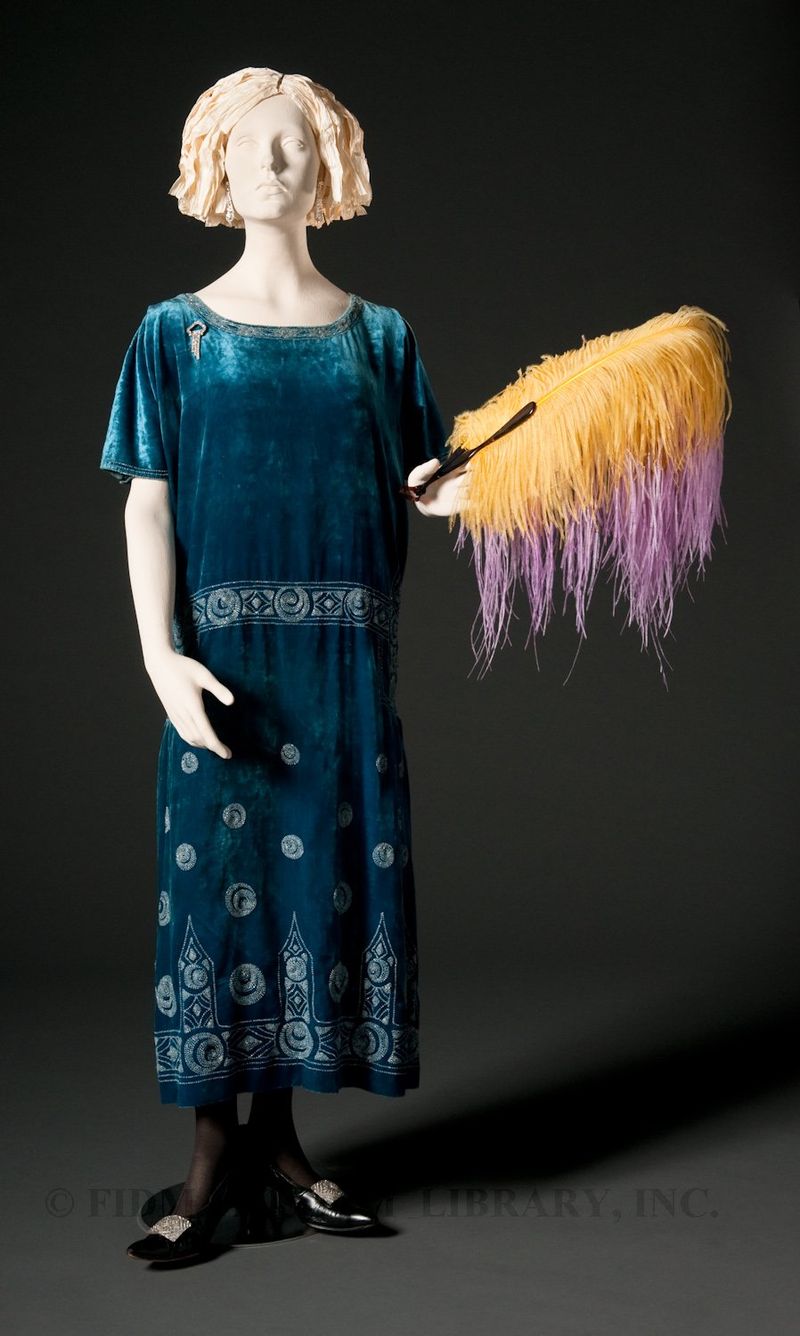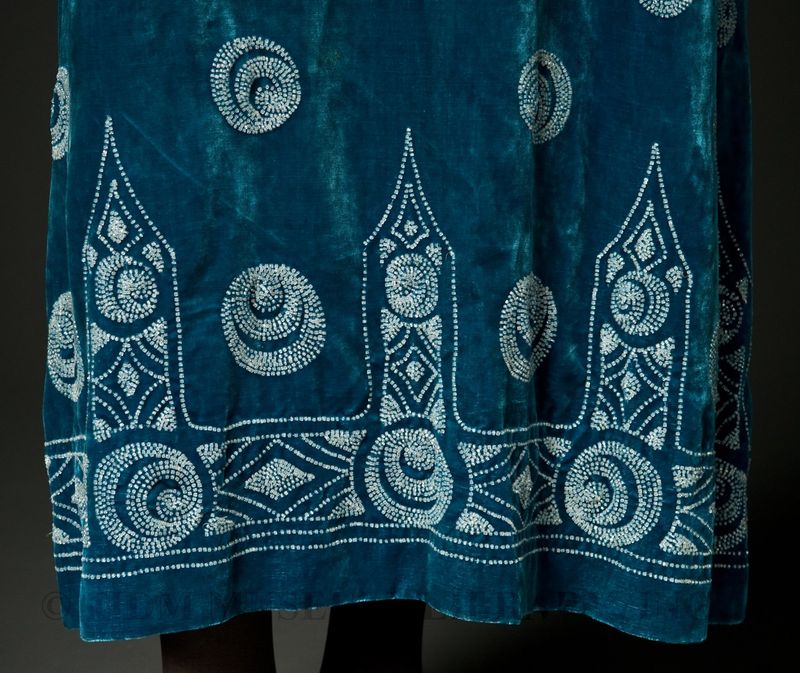Evening glamour, c. 1922
 Evening dress c. 1922 Gift of Laura Stoneman 96.657.2
Evening dress c. 1922 Gift of Laura Stoneman 96.657.2
During the 1920s, nightlife was an important aspect of popular culture. In the United States, the Prohibition of alcohol led to the rise of speakeasies, where patrons could dine, dance and drink in an atmosphere of illicit pleasure. Glamorous evenings required eye-catching garb, such as the beaded velvet evening dress pictured here. As described in this post on the 1920s silhouette, the favored silhouette for both day and evening wear was slim and straight, uninterrupted by the curves of the body. Dresses were reduced to two simple panels of fabric, joined at the shoulders and side seams. For evening, these flat panels became canvases on which beading, sequins, embroidery and other embellishments created abstract or pictorial imagery.
Like many decorative schemes of the 1920s, the beading on this dress borrows its motifs from non-Western imagery. In this case, the placement of the glass seed beads was probably intended to suggest the towering shape of a minaret. The circular motif might be a version of the cintamani, a popular Ottoman (Turkish) motif. Though 1920s Art Deco design borrowed from multiple countries and cultures, the 1919-1922 conflict between Greece and Turkey was widely reported by European and United States press. The prominence of this conflict could have inspired an embroidery designer to seek out related design motifs. As Paris was the acknowledged center of fashion and luxury garment production in the 1920s, it's no surprise that a tag inside this garment reads, "French Hand Made." Though specific designers and their clients were the well-known faces of the French fashion industry, skilled craftspeople worked behind the scenes to realize designers' creations. Glove makers, shoe makers, embroiderers, button makers and milliners all contributed their skills to the final look of an ensemble. One of the more unique crafts was the feather and flower maker, or plumassier.2 The waterfall ostrich feather fan pictured below would have required the combined talents of a plumassier and a fan maker.
Feather fan 1920-29 Gift of Prentiss Durst 2001.174.10
Feather evening fans enjoyed great popularity during the 1920s. Providing a soft, textural contrast to the angular lines of 1920s dress, feather fans were a prized evening accessory. Ostrich feathers, usually dyed, were popular, though feathers from all types of birds were enlisted in the service of fashion. A 1925 article in the New York Times described the "bewildering list of color combinations...'ombre' [dyed] is exceedingly popular. Lavender and rose, pale yellow, green and blue are subtly blended with results that have enduring charm."1 The longest, most extravagant feather fans nearly touched the floor and were longer than fashionable skirt lengths. Fan handles were equally elaborate, made of tortiseshell, jade, ivory or even gold filigree. 1 Hayt, Elizabeth. "The Hands that Sew the Sequins." New York Times 19 Jan. 2006. 2 "Variety in Fans." New York Times 1 March 1925: X10.
